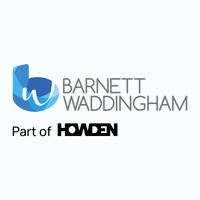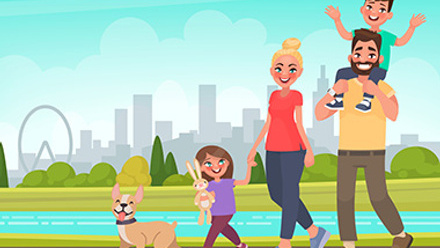5 ways to ensure inclusive health and wellbeing benefit communications
While making communications accessible to the majority is relatively straightforward, some employees might have visible or non-visible disabilities that require a slightly different approach.
This could be setting information out in a different format or choosing a specific, accessible channel for example, to make sure they aren’t missing out on the overall employee experience.
Neurodiverse employees also require a more tailored approach as they process information differently to others.
Neurodiverse conditions include attention-deficit hyperactivity disorder (ADHD), dyslexia and autism.
For example, somebody on the autistic spectrum might struggle with overly stylised fonts and bright colours, making those communications difficult to understand.
Knowing your people and taking this into account is an essential part of planning an effective communications strategy.
Here are five ways you can make your benefit communications inclusive to all employees:
1. Actively involve your employees
Put yourself in the shoes of those employees.
Collaborate internally by running a series of workshops across various locations and ask questions about communication preferences, such as delivery method and language.
Try inviting representatives from your networks and present a few examples for consideration to get some tangible insight.
This might seem time-consuming but will set you up for success in terms of engagement results by showing people you care and are taking their needs seriously.
It will also help your people feel seen and heard, securing better retention rates and encouraging greater diversity in your recruitment process.
2. Choose your channels
The data you’ve gathered is invaluable and will help you decide which channels you’re going to use and when, to optimise engagement across all your employees.
If you’ve invited people to an in-person focus group, this might have highlighted what information your employees would like to see, such as benefit window opening and closing times and the type of channel they’re most likely to use.
You can start to tailor your messages and nuance them for different audiences and different channels based on the data.
3. Be prepared to adapt your content
Your neurodiverse employees might prefer to see information presented more visually rather than just as text.
If you’re presenting numbers, using infographics will make it easier for those with dyscalculia to understand.
For maximum engagement, you should use universal language and a conversational tone of voice.
Catering for those with a short attention span might involve crafting clever micro copy or shortening lengthy communications into something more succinct.
Videos are also a great way to communicate messages to a diverse audience.
4. Look at the design
Your focus group might have revealed what kind of imagery your employees would like to see, so show them you’ve taken their feedback on board by using a diverse range of images that are inclusive and representative of your audience.
Use a clear, sans serif font that’s non-decorative and make sure any colours have a high enough contrast rating so they’re easy to read.
Those who are colourblind might not recognise some colours – often green and red – so avoid using them, especially those that are tonally lighter.
To better cater for those who are neurodiverse, don’t use too many words per line and include white space to keep the focus on what’s important.
5. Test how your communications are landing
Let the data drive your decision-making by regularly checking how your communications are landing.
Look at testing your communications with your focus group before they go out and conduct a short survey afterwards so you can adapt and make your communications more targeted and relevant.
By doing this, you get firsthand audience feedback and can amend anything before you send out to everyone.
Be clear about your benefits
While these five ways will help make your benefit communications inclusive to employees with disabilities or who are neurodiverse, they’re useful to everyone.
We know choosing benefits can be overwhelming and employees might not know which will be most suitable for them and their family.
But providing clear descriptions, examples, comprehensive information and tools can help avoid any confusion and support employees to make well-informed decisions around their benefits.
Supplied by REBA Associate Member, Barnett Waddingham
Barnett Waddingham is proud to be a leading independent UK professional services consultancy at the forefront of risk, pensions, investment, and insurance. We work to deliver on our promise to ensure the highest levels of trust, integrity and quality through our purpose and behaviours.








